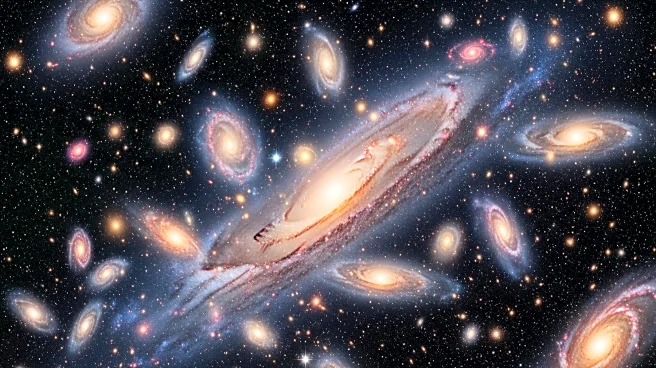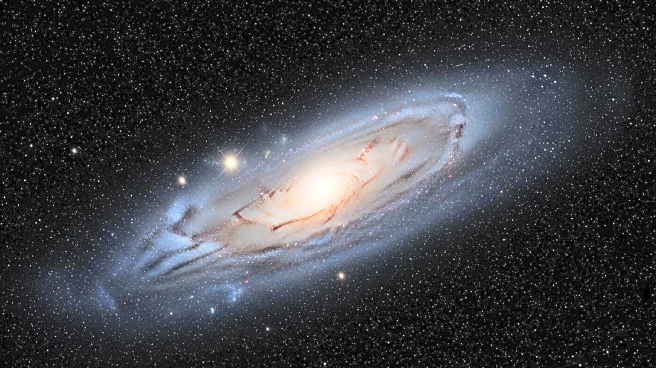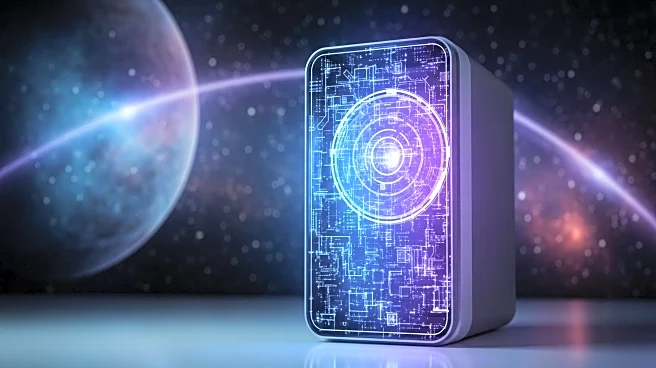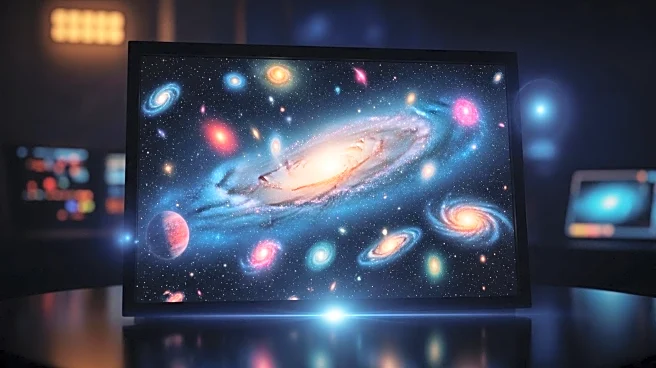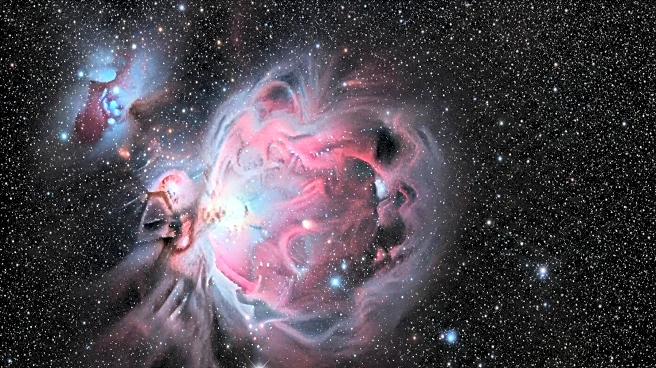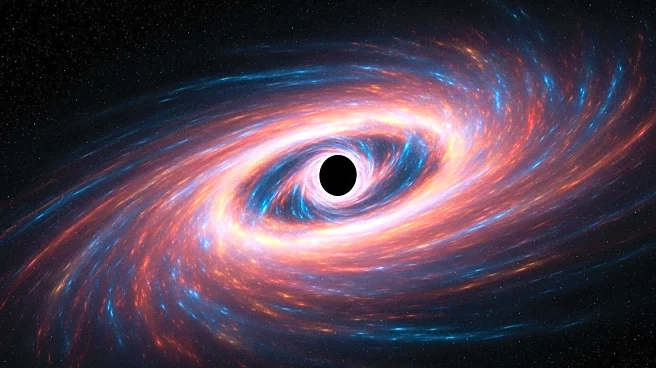What's Happening?
The Euclid Consortium, part of the European Space Agency's mission, has released Flagship 2, the largest and most detailed simulation of the universe to date. This digital model includes 3.4 billion galaxies and tracks the gravitational interactions of over 4 trillion particles. Developed using an algorithm by University of Zurich astrophysicist Joachim Stadel, the simulation aims to assist in analyzing data collected by the Euclid space telescope. Launched in July 2023, Euclid orbits at the Sun-Earth Lagrange Point 2 and is tasked with uncovering the secrets of dark matter and dark energy by capturing detailed images of galaxies.
Why It's Important?
The Flagship 2 simulation is crucial for advancing the understanding of dark matter and dark energy, which constitute 95% of the universe but remain poorly understood. By comparing Euclid's observations with the simulation, scientists can test and refine current cosmological models. This research is vital for explaining why the universe's expansion is accelerating and could lead to groundbreaking discoveries about the fundamental forces shaping the cosmos. The simulation also provides a virtual universe for scientists to explore, potentially revealing rare cosmic phenomena and challenging existing theories.
What's Next?
Euclid's first observational data, known as Quick Euclid data release 1, was released in March 2025, with the next major data release scheduled for October 2026. Scientists will continue to analyze the data and compare it with the Flagship 2 simulation to refine their understanding of the universe. The mission may uncover unexpected discoveries, prompting further research and potentially leading to revisions of the standard cosmological model. The ongoing study of dark matter and dark energy will remain a priority for the scientific community.

